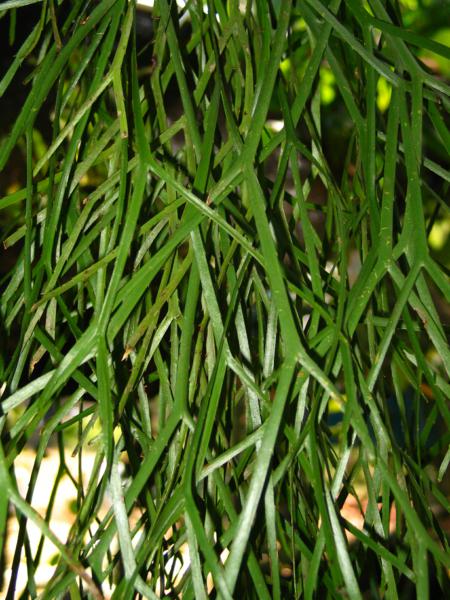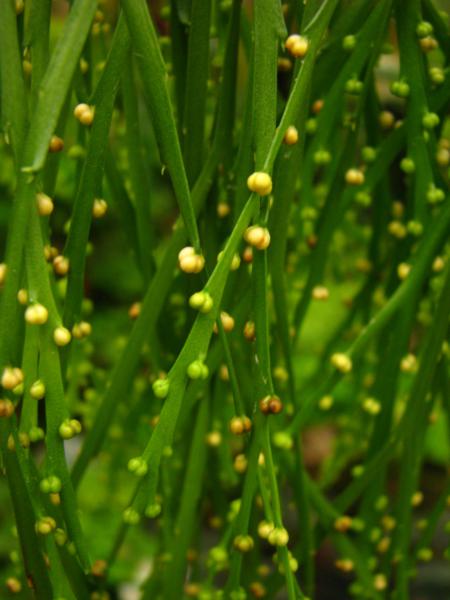
Psilotum complanatum Sw.
Family
Psilotaceae
Nomenclature
Psilotum complanatum Sw., Syn. Fil: 188, 414, t. 4, f. 5. 1806; Tagawa & K.Iwats., Acta Phytotax. Geobot. 25: 16. 1971; Tagawa & K.Iwats., Fl. Thailand 3: 6, f. 1.7–1.8. 1979; Boonkerd & Pollawatn, Pterid. Thailand: 63. 2000; Kiew, Fl. Pen. Malaysia, Ser. I, Ferns & Lycoph. 1: 88. 2010. – Type: Herb. Willdenow s.n., America (holotype B).
Description
Description from Kiew, Fl. Pen. Malaysia, Ser. I, Ferns & Lycoph. 1: 88. 2010.Pendent epiphyte. Rhizomes creeping, 0.5–1.5 mm diameter. Aerial stems and branches flattened with a distinct midrib, usually 20–100 cm long, exceptionally to 2 m long, lower unbranched part (9–)22–25(–36) cm long and (2–)3–4 mm wide, upper branches (13–)35(60) cm long, 2–3(–4) min wide, synangia inset laterally giving the stem a jagged appearance, appendages lateral and alternate, 1–2 mm long. Synangia 1(–3) mm diameter, yellowish green becoming yellow when mature .
Distribution in Thailand
PENINSULAR: Surat Thani.
Wider Distribution
Pantropical.
Ecology
Epiphytic on tree trunks in light shade.
Proposed IUCN Conservation Assessment
Least Concern (LC). This species is widespread and not under any known threat. It has been given an assessment of near Threatened in the Flora of Peninsular Malaysia.
Habit
Sporangia
Site hosted by the Royal Botanic Garden Edinburgh. Content managed by Stuart Lindsay, Gardens by the Bay, Singapore and David Middleton, Singapore Botanic Gardens. Last updated 24 January 2012

